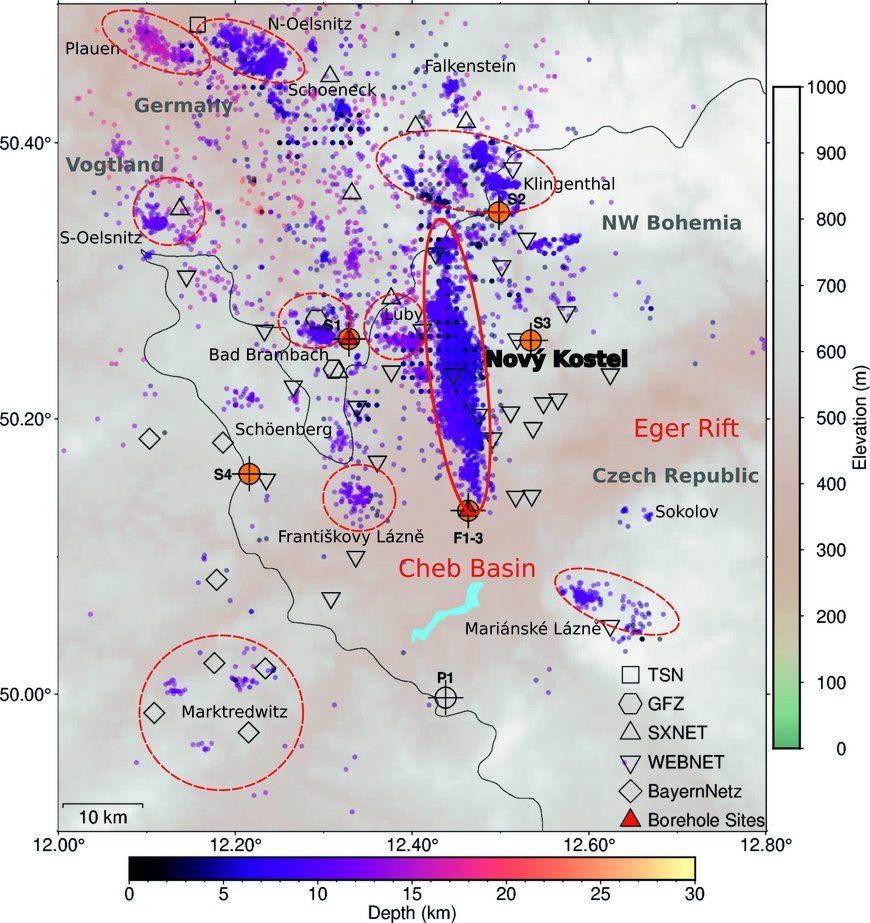CHASING - Characterizing source properties of NW Bohemia/Vogtland earthquake swarms exploiting novel network and waveform processing tools
Duration: 2023 – 2025
Funding: DFG - SPP 1006: International Continental Scientific Drilling Program (ICDP)
Principal Investigator: Pinar Büyükakpinar
Cooperation/Partner:
Institute of Geophysics of the Czech Academy of Science
University of Potsdam
University of Leipzig
Ludwig Maximilian University of München
University of Granada (Spain)
National Institute of Geophysics and Volcanology – INGV
Understanding the cause of the earthquake swarms in the NW Bohemia/Vogtland region and the role of fluids or magmas is one of the primary goals of the ICDP-Eger project. We aim to explore temporal changes of earthquake swarms and compare them with earthquake swarm generation models. Due to the recently employed unique measurement conditions with a combination of close-meshed seismological bedrock stations with small-scale high-frequency 3D arrays and ICDP monitoring boreholes, the project to gather the necessary source information using innovative approaches for these goals.
The project aims to develop novel automatic processing to exploit rich and unique dataset, including waveform-based detection, re-location, and Bayesian full-moment tensor inversion. We intend to significantly increase the catalog size with a completeness magnitude Mc<-0.5. Moreover, it is purposed to reveal the source characteristics of the smallest micro-earthquakes by applying a relative moment tensor inversion method. Rupture directions can be estimated from the azimuthal variations of amplitudes of source time functions. The combination of the set of relative locations, relative source mechanism, rupture direction changes with fluid-induced seismicity and emplacement models can decipher the processes that lead to earthquake swarms. The ultimate goal is to answer the question of whether swarms in the region have a common origin, and whether the exceptional strong activity beneath Nový Kostel since 1984 indicates that magma penetrated into the upper crust at this location.


